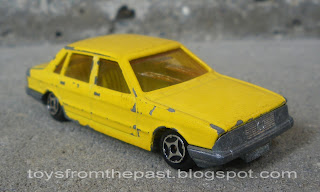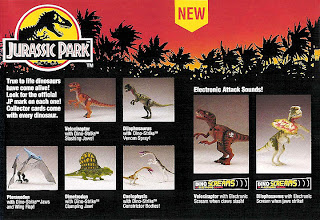These three figures were made by Kenner for the Star Wars
toy-line years after the first movie (Epidose IV), to be ready when the second
movie (Episode V: The Empire Strikes Back) came out.
If you know the movie, you’ll remember that
most of the history is set in Hoth, an icy planet covered by snow where the rebels
have built their base “Echo Base”.
That’s why most of the main Star Wars
characters were re-released in proper snow-outfits. These three figures are
completely new, since they were not released before. They represent a rebel
soldier, a rebel commander and an AT-AT driver. The AT-AT‘s (also AT-AT
walkers) were those four-legged vehicles from the Empire that walked the planet
Hoth. A figure of its pilot was released in 1980. This pilot basically looks
like a normal Stormtrooper, but with slightly different colours and helmet.
AT-AT PILOT: Came with a rifle with strap (the
rifle in the picture is original but missing the strap) so the figure could attach the rifle
to his back instead of carrying it on his hand.
REBEL COMMANDER: Came with a black rifle with strap (in picture: repro). Interestingly, although there should have been several commanders, the one that made it to action figure is based on the character Major Derlin, played by John Ratzenberger.
REBEL SOLDIER: Came with a Bespin blaster (in picture: repro). This figure has a couple of colour variations.
Something interesting about these figures (as
well as about many other in many different toy-lines), is that they do not represent
single characters. They have generic names (soldier, commander, driver), and this
means that in the story behind the toy-line (or in this case, in the film),
there are more than one of those. This leads to a collectors habit which is
called army-building. It basically consist of getting as many of those figures
as you can: if you have 20 Rebel Soldiers, it is much better than if you have
only 10; this way you can arrange the figures to represent scenes from the
movie, or some military parade.
The “star” within the Star Wars collection are
naturally the Stormtroopers, but both the AT-AT Driver and the Rebel Soldier
can be “armybuilderized”. The Rebel Commander too, but is lower quantities.
Almost any action figure toy-line is liable to
army-building. Even in character based lines, like Masters of the Universe,
there are characters which for some reason were planned to be a group rather
than a single character. In this case, collectors amass as many “Horde Troopers”
as they get. In military based lines like G.I.Joe: ARAH, this is taken to the extreme
with people having hundreds of units of a single figure.
The consequence of this is that the figures
that fall in this category are always much more expensive than the average, and
they do not flow from one collector to another as the other figures, because
many keep them, even if they already have it.
Some collectors even customize (if possible) their
figures, so they are slightly different, for example, they paint the figures
with different shades of skin colour or hair colour, maybe they add (or remove)
a moustache or a beard… so the army is a bit more heteregoneous.
There are really impressive picture on the
internet under the search term “army building”. I do not think it is a good
idea, since it costs a lot of money to buy multiple figures of the same model,
and I try to avoid this, although I must admit, I have some small “armies” of
G.I.Joes, that I used for dioramas.
FACTS AND FIGURES:
- Name: REBEL COMMANDER and REBEL SOLDIER
vs. AT-AT DRIVER
- Toy Line: Star Wars: The Empire Strikes
Back
- Year: 1980
- Company: Kenner
(U.S.A.)
- Size of the figure: 3 ½¨ or 8 cms




+%5B1600x1200%5D.jpg)



+%5B1600x1200%5D.jpg)
+%5B1600x1200%5D.jpg)
+%5B1600x1200%5D.jpg)

.jpg)
.jpg)
+%5B1024x768%5D.jpg)






+%5B1024x768%5D.jpg)

.jpg)
.jpg)
.jpg)
.jpg)
.jpg)
.jpg)
+%5B1600x1200%5D.jpg)
+%5B1600x1200%5D.jpg)
+%5B1600x1200%5D.jpg)
+%5B1600x1200%5D.jpg)
+%5B1600x1200%5D.jpg)
+%5B1600x1200%5D.jpg)
+%5B1600x1200%5D.jpg)

+%5B1600x1200%5D.jpg)
.jpg)

.jpg)





.jpg)
.jpg)